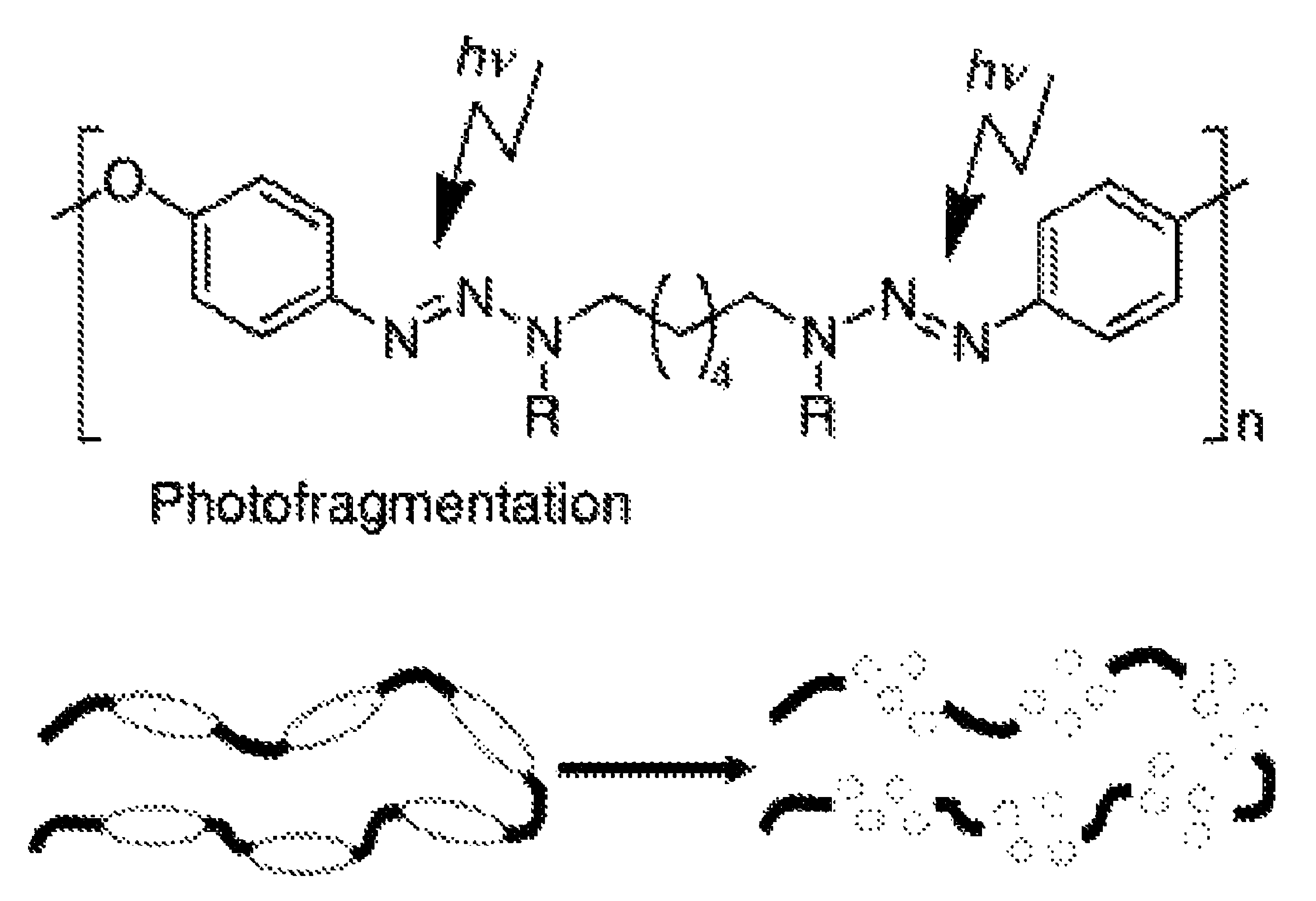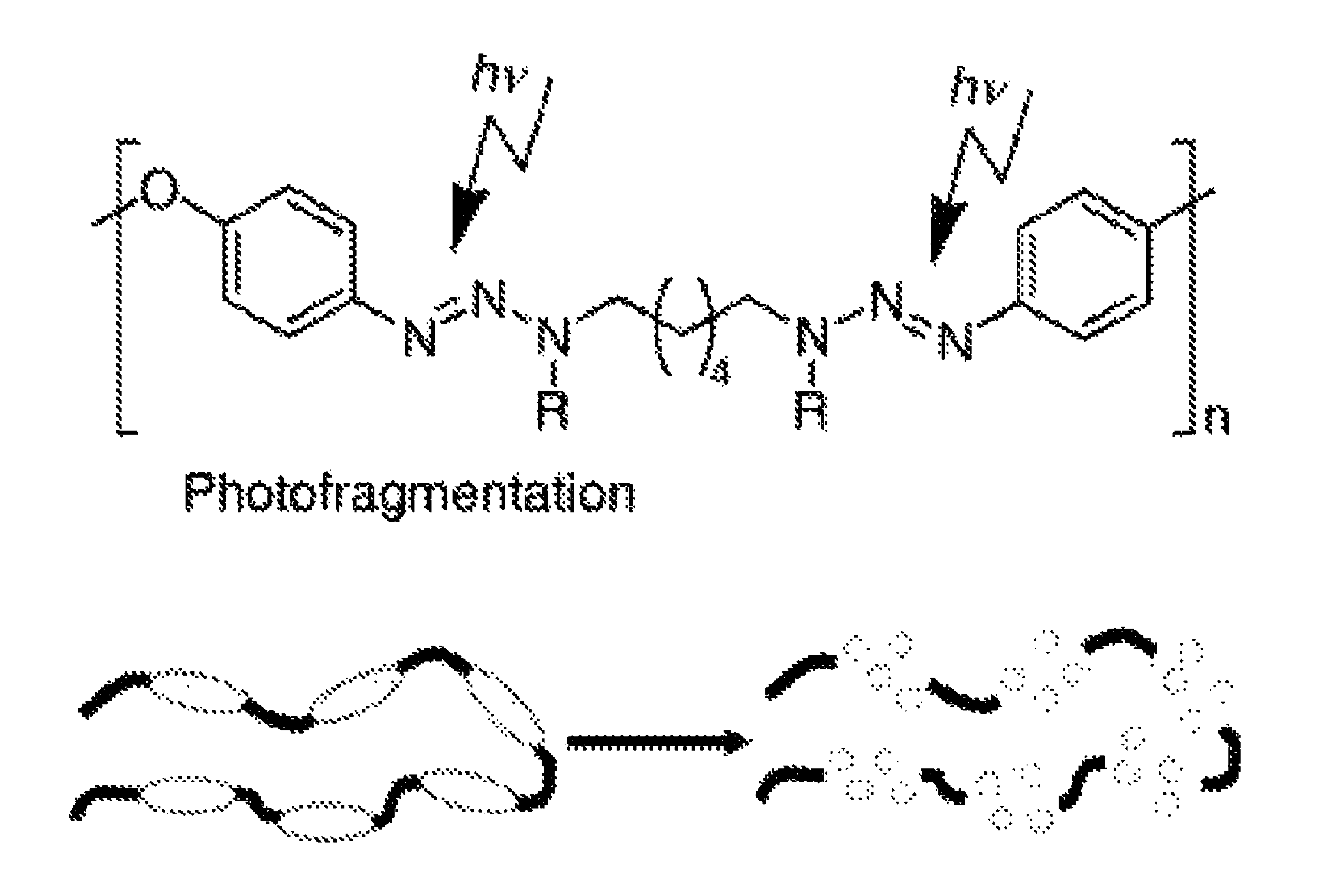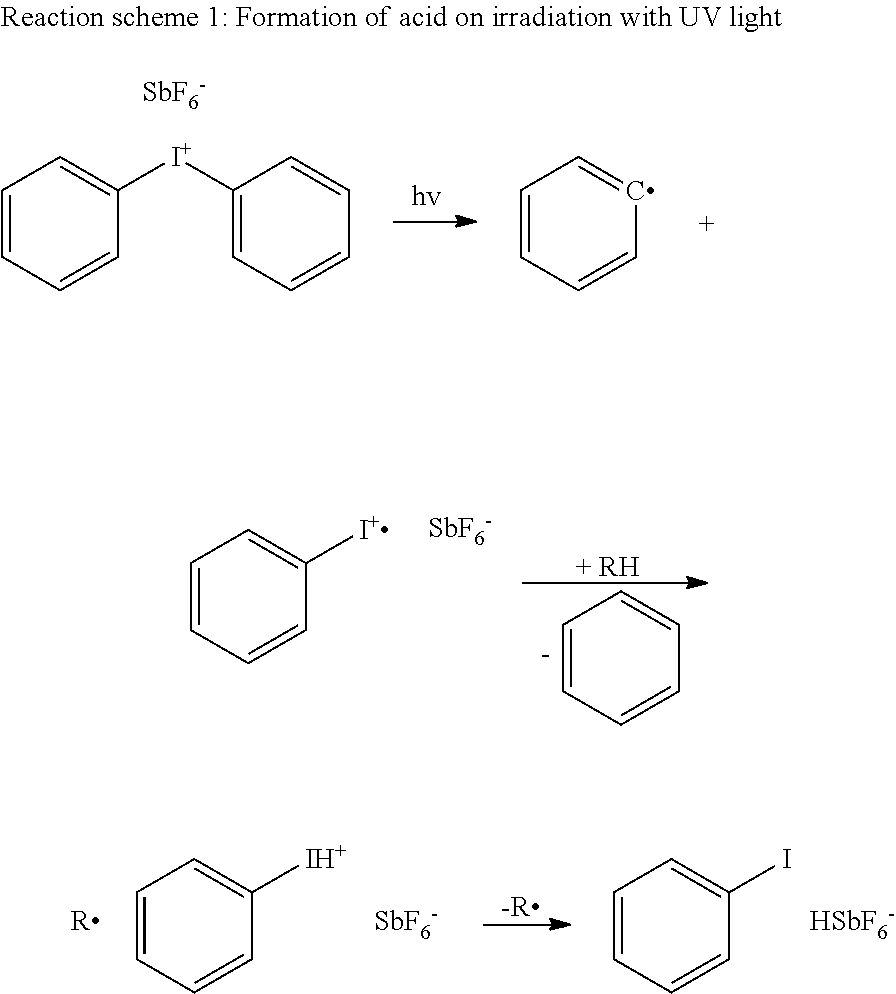Method for protecting the surface of an aircraft against contamination with insect residues and/or icing
a technology for aircraft surface and insect residues, which is applied in the direction of biocides, nuclear engineering, paints, etc., can solve the problems of high energy expenditure, high cost of corresponding fuels, and often disturbed laminar flow profil
- Summary
- Abstract
- Description
- Claims
- Application Information
AI Technical Summary
Benefits of technology
Problems solved by technology
Method used
Image
Examples
example 1
Example of a Recipe for a Protective Layer for Detachment by UV Radiation
[0114]The following example of a recipe is a single-component system, which can be applied by a spraying process.
[0115]
TABLE 1RecipeItemRaw materialWeight [g]01Slightly branched polyester containing OH groups29.9(Desmophen 670)02Butyl acetate44.903Dicyclohexylmethane diisocyanate (Desmodur W)9.904Butyl diglycol15.005Diphenyliodonium hexafluoroantimonate0.3Total100
example 2
Example of a Recipe for a Layer for which Adhesion Decreases Under the Action of UV Radiation by Radical Degradation
[0116]The coating is a two-component system.
[0117]
TABLE 3.1ItemRaw materialWeight [g]Recipe of base01Polypox E 06434.502Degussa P2543.003Methoxypropyl acetate19.704n-Butanol2.8Total base100Hardener01Polypox H 14713.8Total hardener13.8
example 3
Example of a Recipe for a Layer that Detaches as a Result of Cold Embrittlement
[0118]Application of an aqueous dispersion of polyvinyl acetate (Craymul 2325 from Cray Valley Kunstharze GmbH in Zwickau) with a dry film layer thickness of 15-30 μm on aluminum sheets, which can be hydrophobized with a plasma-polymer separating layer.
PUM
| Property | Measurement | Unit |
|---|---|---|
| size | aaaaa | aaaaa |
| size | aaaaa | aaaaa |
| altitudes | aaaaa | aaaaa |
Abstract
Description
Claims
Application Information
 Login to View More
Login to View More - R&D
- Intellectual Property
- Life Sciences
- Materials
- Tech Scout
- Unparalleled Data Quality
- Higher Quality Content
- 60% Fewer Hallucinations
Browse by: Latest US Patents, China's latest patents, Technical Efficacy Thesaurus, Application Domain, Technology Topic, Popular Technical Reports.
© 2025 PatSnap. All rights reserved.Legal|Privacy policy|Modern Slavery Act Transparency Statement|Sitemap|About US| Contact US: help@patsnap.com



